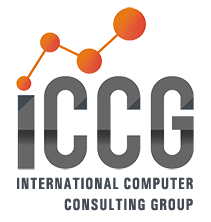by Mike Edgett, Director of Industry Marketing for Process Manufacturing, Infor
System-wide modernization has been a long-term priority for many food and beverage (F&B) companies, but is often stalled waiting for funds. Several investment options compete for those hard-earned dollars. The continual need to develop new products to meet consumer demand often make research and development (R&D) spending the priority. What does that leave for software investment?
Now, as digital technology and disruptive innovations like the Internet of Things sweep across every business landscape, transforming the way we do business, the need for modernization is moving up in priority. Food manufacturers, however, may be overwhelmed and uncertain of where to start.
As customer behaviors and needs change, the F&B industry must have the flexibility to adjust business practices in order to meet those changes. Organizations need to embrace innovative technologies that help optimize daily operations and hone profit margins. It’s not just about offering the lowest prices. Now, to succeed, there must be customer alignment.
Here are seven ways to start building this differentiation through digital transformation, and the technologies that will help make these goals a reality.

1. Embrace value-added services
“Service” now means so much more than what we typically think of good customer service. It may be eliminating an onerous task for your customers, anticipating their needs, managing a process for them from beginning to end, or streamlining your interactions with them. That service may be something you deliver directly to the customer, or in some cases, something you do to make engagement with the customer more convenient or more valuable. Customers today have concerns that transcend the singular product. They are also concerned about the impact on the environment, the working conditions of plant workers and sustainability of the operations and the supply chain.
Software solutions will help manage processes and streamline activities to support customers. Online portals can also be used to interact with consumers, distributors and channel partners. With modernized systems, these added customer-centric features can be relatively simple to provide, yet yield high returns in customer loyalty.
2. Improve the customer experience
According to Constellation Research, “Organizations are moving from products to services, services to experiences, experiences to insights, insights to brand promises.” It’s becoming increasingly important to build a distinct brand and stand out in your customer’s recognition. In today’s global economy, customers have many choices.
Understanding what customers want (and need) and how they prefer to interact is key. Chances are, customers are accustomed to omnichannel commerce opportunities, which allow them to do business anytime, from anywhere, whether that's at home, school or office. Additionally, they are looking for more information than can fit on a typical label including country of origin, GMO and more. Modern technology supports this flexibility. Customer experience suites, e-commerce, Product Lifecycle Managements (PLM) solutions to manage development and labels, and tools for online portals are just some of the ways modern solutions can transform the customer experience into a point of differentiation
3. Fine tune supply and demand forecasting
In most manufacturing and food processing operations, inventory represents a sizable investment. Keeping the necessary inventory can be costly. Effectively managing inventory levels is one of the ways companies can optimize cash flow — without risking customer satisfaction. Accurately understanding customer needs, predicting seasonal demand and projecting logistical needs will help procurement managers with necessary resources to fulfill orders.
Companies which have invested in a modern, integrated ERP system with advanced analytics capabilities, as well as sophisticated supply, demand and inventory tools, will be best positioned to take advantage of these opportunities.
4. Leverage sensors to protect equipment value
The use of smart sensors has transformed the production process for manufacturers in all industries, including F&B companies. Smart sensors can be used to monitor machine performance and identify anomalies, which may predict impending failure or maintenance needs. Acting as an early warning system, sensors can help keep machines running and extend the life-cycle of critical equipment. Sensors can also be used to monitor conditions throughout the supply chain — especially important for fresh ingredients in F&B — which require refrigeration or humidity control.
5. Optimize the marketing and sales processes
Marketing and sales are increasingly important for manufacturers. Many organizations, however, are still using old-school marketing tactics, missing opportunities and losing market share to upstart, aggressive competition. Transitioning to a digital marketing approach is an important part of the overall modernization strategy.
In the F&B industry, digital marketing is even more critical as companies need to align with consumers early and often. Understanding consumers' taste preferences and desires for clean labels, healthy, non-GMO or organic offerings will shape the R&D process, as well as development of new products. Marketing tailored to niche markets will help build demand for specialized offerings.
6. Support suppliers and vertically integrated divisions with advanced tools
Many food manufacturers have unique partnerships with their suppliers, and the value of data proceed from the plant floor to the farm. Whether it is technicians to repair refrigeration units in a remote warehouse, maintenance crews who keep in-field harvesting equipment running smoothly or real-time lab data from suppliers that can impact scheduling — these advanced tools can truly make a business more efficient. In each case, organizations can benefit from new technologies, which make the technician more productive and well-informed, helping him or her to resolve maintenance and service orders in less time and with fewer trips back to the service center. With a current shortage of skilled technicians, enhancing the ability of each technician is increasingly important.
7. Anytime, anywhere business
Mobile solutions, online portals and remote connectivity are all essential for modern business applications. Connectivity helps workers who are always on the move, from managers to sales staff. Companies can make it easy for personnel to do business remotely, whenever the need arises. Whether it’s a sales rep who needs to update invoices in real time, a customer who wants to learn about calories in a product or a procurement specialist who needs to modify a purchase order on the fly, integrating mobile devices with core software helps organizations work more efficiently.
Why the Urgency?
In today’s marketplace, technology simply can’t be an afterthought. It must be a part of a company’s overall strategy. Now is the time to plan a modernization strategy that ties together all seven entry points listed in this article. A comprehensive plan will ensure that the various components are compatible and contribute to the high-level objectives and priorities. With system-wide modernization in place, organizations can embark on building new ideas for products, packaging and reaching consumers. It is a new era. Companies can embrace digital tactics or be left on the sidelines as the competition rushes past.

